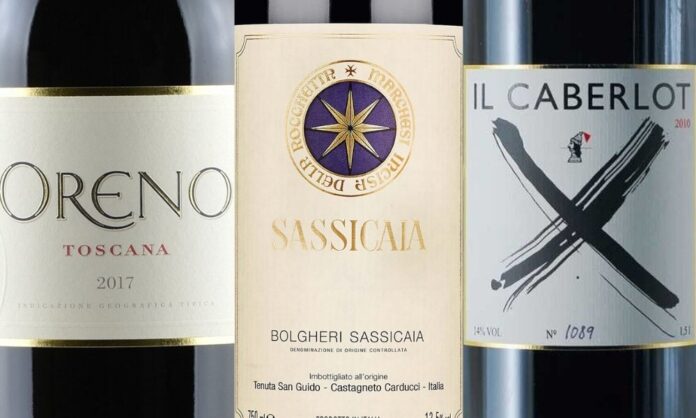
What are the best Tuscan wines? Discover our list with photos, description and tasting of the top 20 best wines of Tuscany.
INDEX BEST WINES OF TUSCANY:
- Best wines of Tuscany
- Grape Varieties of Tuscany
- DOC and DOCG of the best wines from Tuscany
- Food pairing and Tuscan wines
BEST WINES OF TUSCANY – Recommended by Jean Marco Palmieri
To learn more about the best Tuscan wines, discover the articles dedicated to the various types:
Occhio di Pernice 2010 – Avignonesi
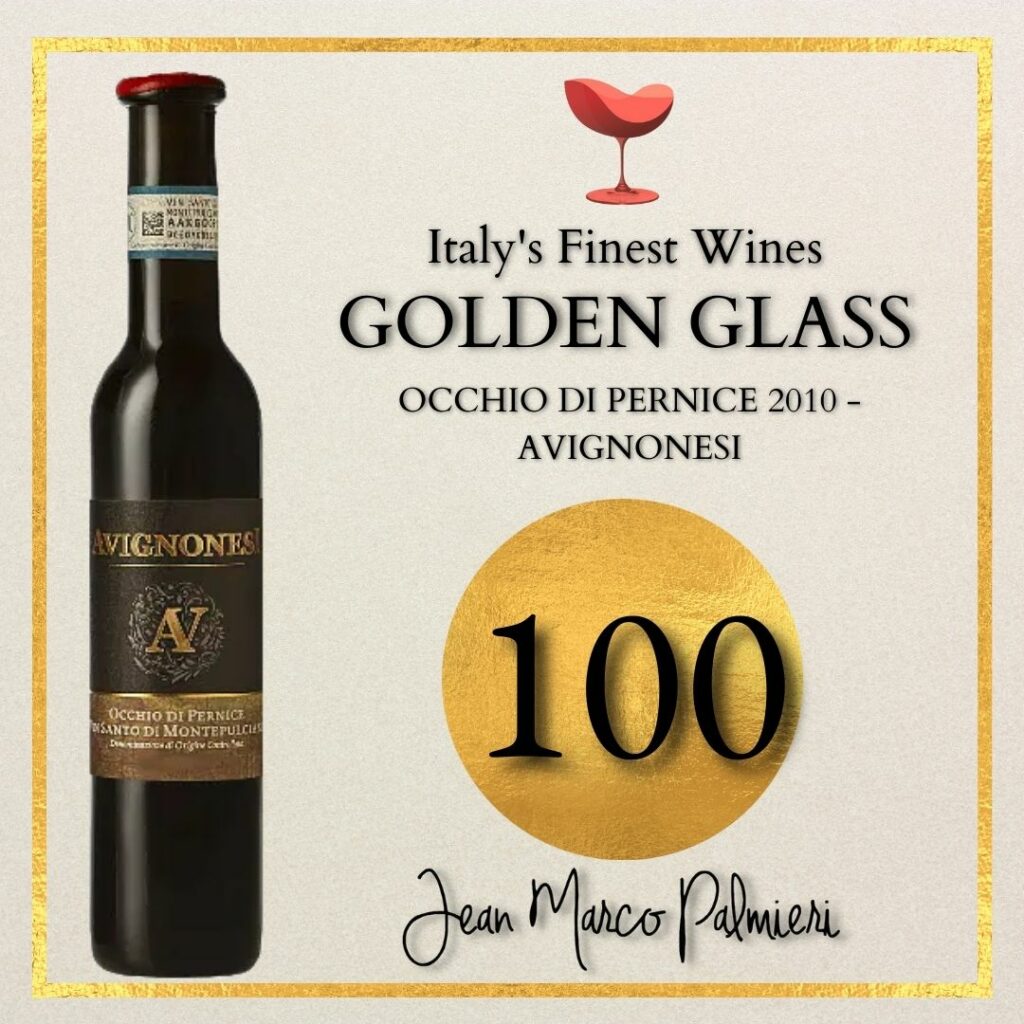
Characteristics: Cherry jam and strokes of dehydrated figs merge with whiffs of sea salt, medicinal herbs, and honey. The palate is soft and opulent, made vibrant by a sharp acidity that extends the drinking experience towards an aromatic and persistent finish.
The grapes were gently pressed, and the must was transferred to caratelli (small barrels of 50-60 L) for slow and natural fermentation, with the addition of indigenous yeast, called “mother.” Aging continues for over 10 years in caratelli.
Grape Variety: Sangiovese 100% Region: Tuscany (Montepulciano)
Brunello di Montalcino Madonna delle Grazie 2019 – Il Marroneto
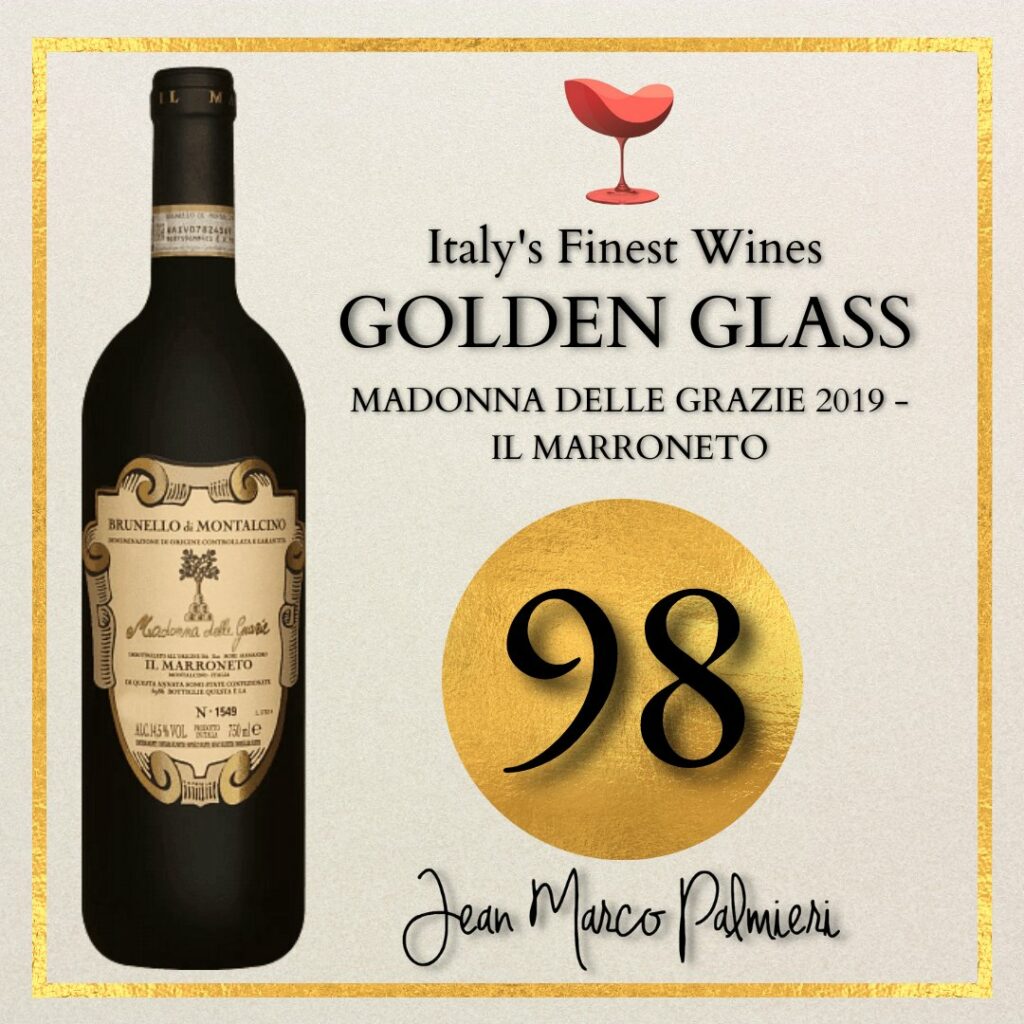
Description: Clear fragrant and floral varietal notes of violet, sour cherries, wild thyme, and a hint of cider. The sip is characterized by impeccably textured tannins synergistically linked to a pronounced acidity and a savory note that give length and presence to the taste.
Il Marroneto, led by Alessandro Mori and his son Jacopo, is a small winery of 6 hectares on the north side of Montalcino, located in an ancient chestnut drying room, from which it takes its name.
Madonna delle Grazie is their cru obtained from a selection of scattered grapes from the historic vineyard at an altitude of 420 meters, with a north exposure and soils composed of 75% marine sands. Vinification takes place with low intervention without the use of oenological additives. Fermentation lasts about 20/22 days. Aging occurs in 25-quintal oak barrels for 41 months.
Madonna delle Grazie confirms itself among the best Italian wines, representing a virtuous interpretation of Sangiovese with a traditional character that emphasizes finesse more than power.
Le Pergole Torte 2020 – Montevertine
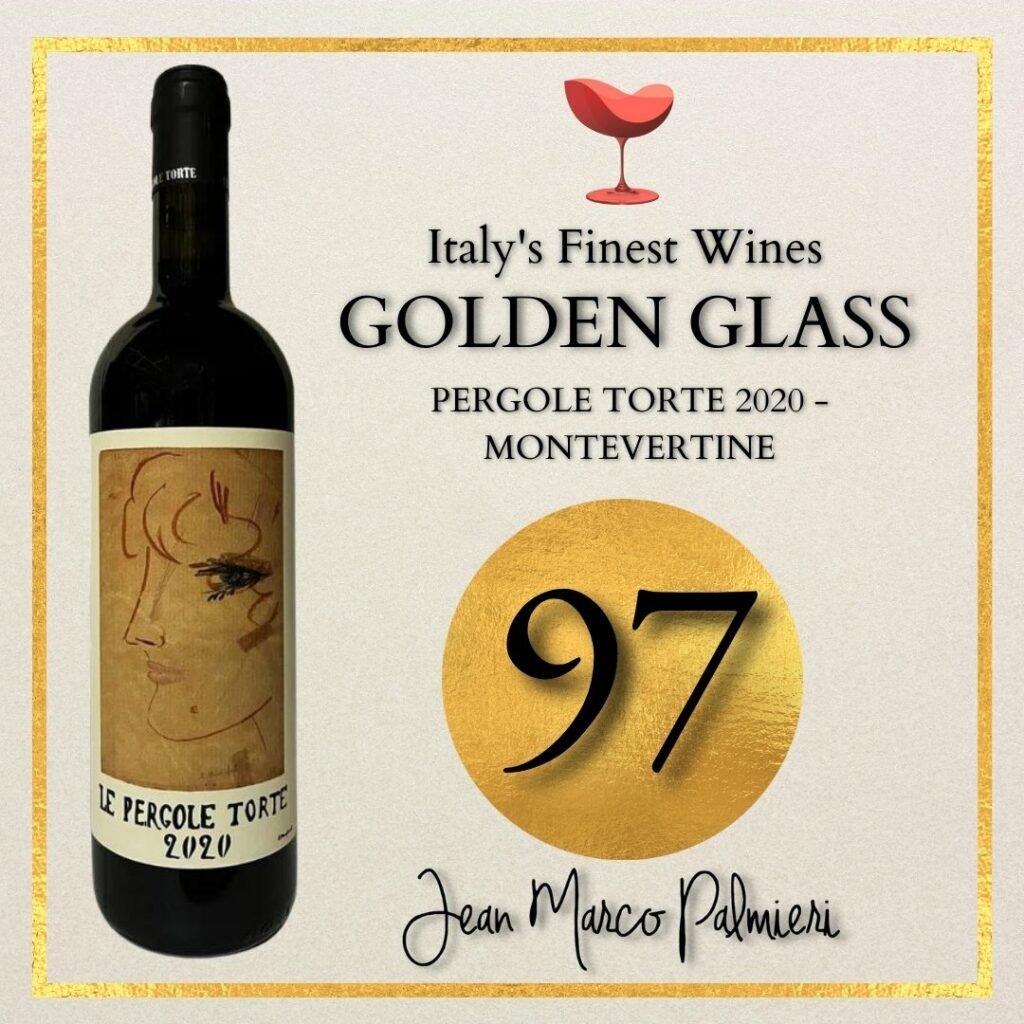
Characteristics: Initially, olfaction plays on notes of sour cherry, violet, orange peel, enriched by more enigmatic scents of wild calamint and humus. On the palate, well-defined and compact tannins and great acidity that gives smoothness.
Fermentation for 25 days by indigenous yeasts in cement vats. Aging begins in Slavonian oak barrels for 12 months, continues in Allier barriques for another 12 months, and ends with 6 months of rest in the bottle.
Grape Variety: Sangiovese 100%
Region: Tuscany
A historic and intoxicating wine among the best interpretations of pure Sangiovese for its multifaceted taste and olfactory complexity.
Refined, elegiac, and linear: of interesting iodized sapidity and inexhaustible persistence, where the undisputed prominence of the
Brunello di Montalcino 2019 – Le Potazzine
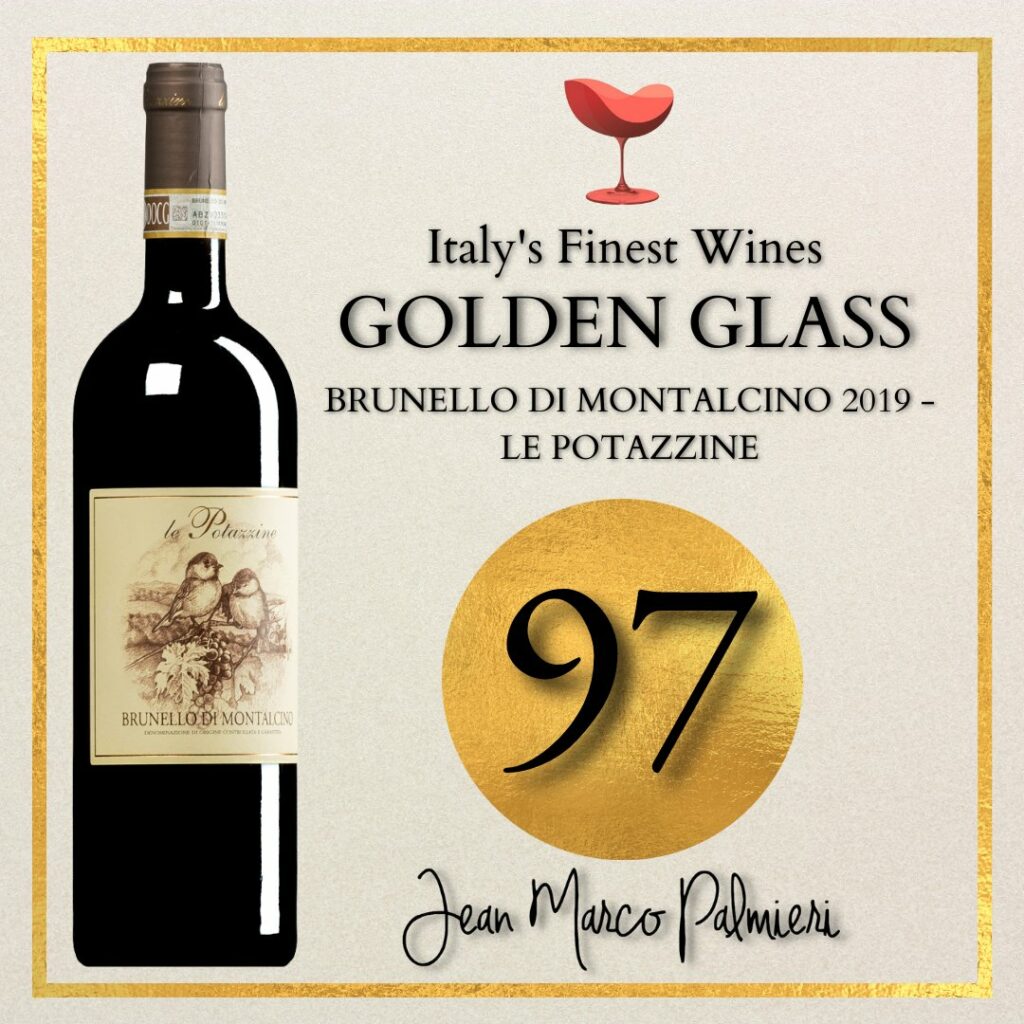
Description: Ripe fruits, notably cherry and bergamot, followed by medicinal herbs and tar. The palate reveals remarkable concentration, creating tension and rhythm with acidic and mineral components. The finish is of great length, dry, and balanced.
Brunello di Montalcino comes from certified organic Sangiovese grapes, obtained from two vineyards located on the southwest slope, at an altitude ranging from 420 to 507 meters above sea level.
Spontaneous fermentations with indigenous yeasts, long macerations, and aging in medium-sized Slavonian oak barrels.
Le Potazzine is a small, family-run winery (around 5 hectares), led by Gigliola and her two daughters, Viola and Sofia, always distinguished for their commitment to sustainable agronomic practices and artisanal approach.
Undoubtedly among the best Italian wines, it stands out for its elegant and traditional style.
Area: Southwest (Le Prata and La Torre)
Ragnaie Vigna Vecchia 2019 – Ragnaie
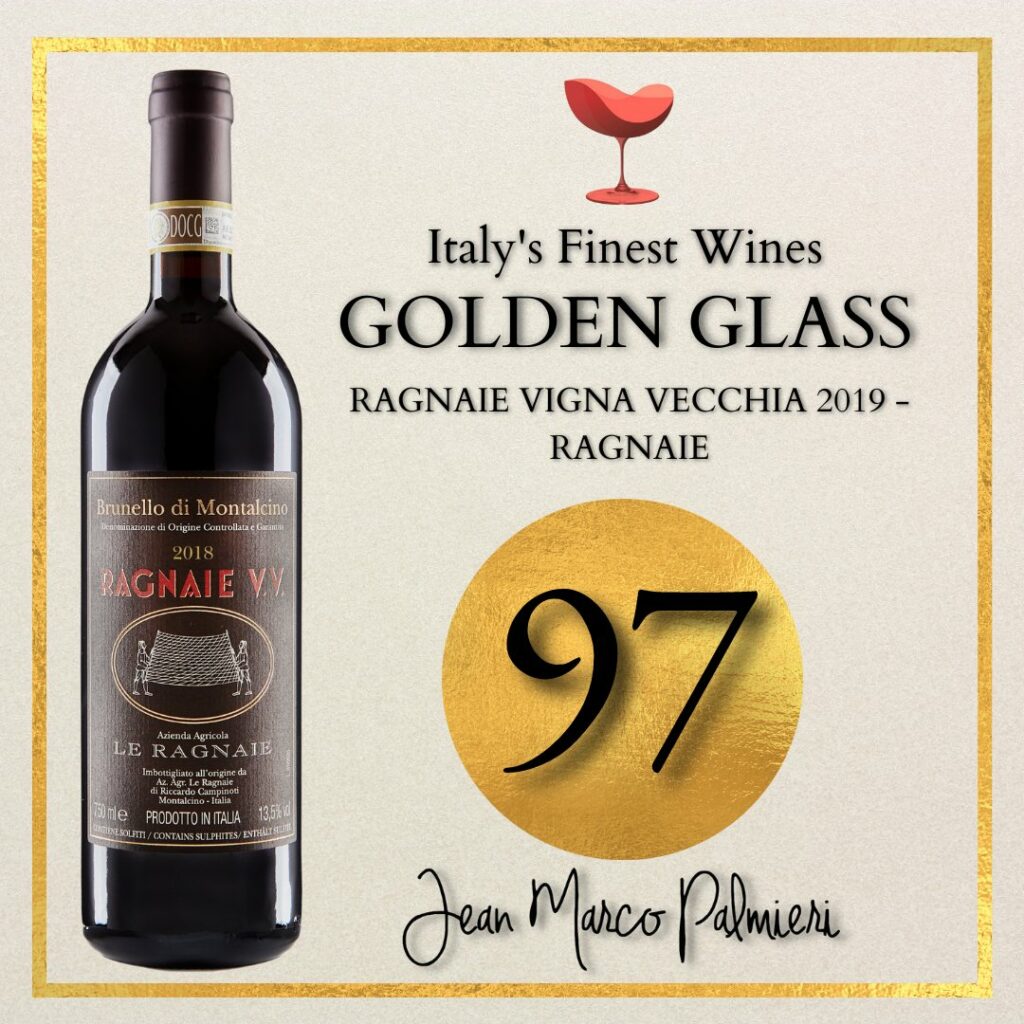
Description: Fresh notes of pomegranate and red orange are joined by balsamic and toasty tones. The sip is characterized by an excellent balance between phenolic concentration, acidity, and alcohol. Rhythm, freshness, and volume on the palate.
Brunello di Montalcino Vigna Vecchia from Le Ragnaie is obtained from grapes from the vineyard located at 600 meters above sea level in the Ragnaie area, immediately southwest of Montalcino. Fermentation by only indigenous yeasts in cement and aging for 36 months in large Slavonian oak barrels. The company uses cement tanks for good temperature control and to keep primary and fermentative aromas intact.
The Le Ragnaie winery of Riccardo Campinoti, thanks to the altitude of the highest vineyards in the denomination, manages to obtain wines with an extremely vertical character. Their Vigna Vecchia is probably the wine that, more than all its Crus, highlights balance rather than a dominant character over others.
A virtuous testimony that reminds us that being craftsmen is not an excuse to be approximate but a privilege to work with precision on details.
‘Sassicaia’ 2020 – Tenuta San Guido
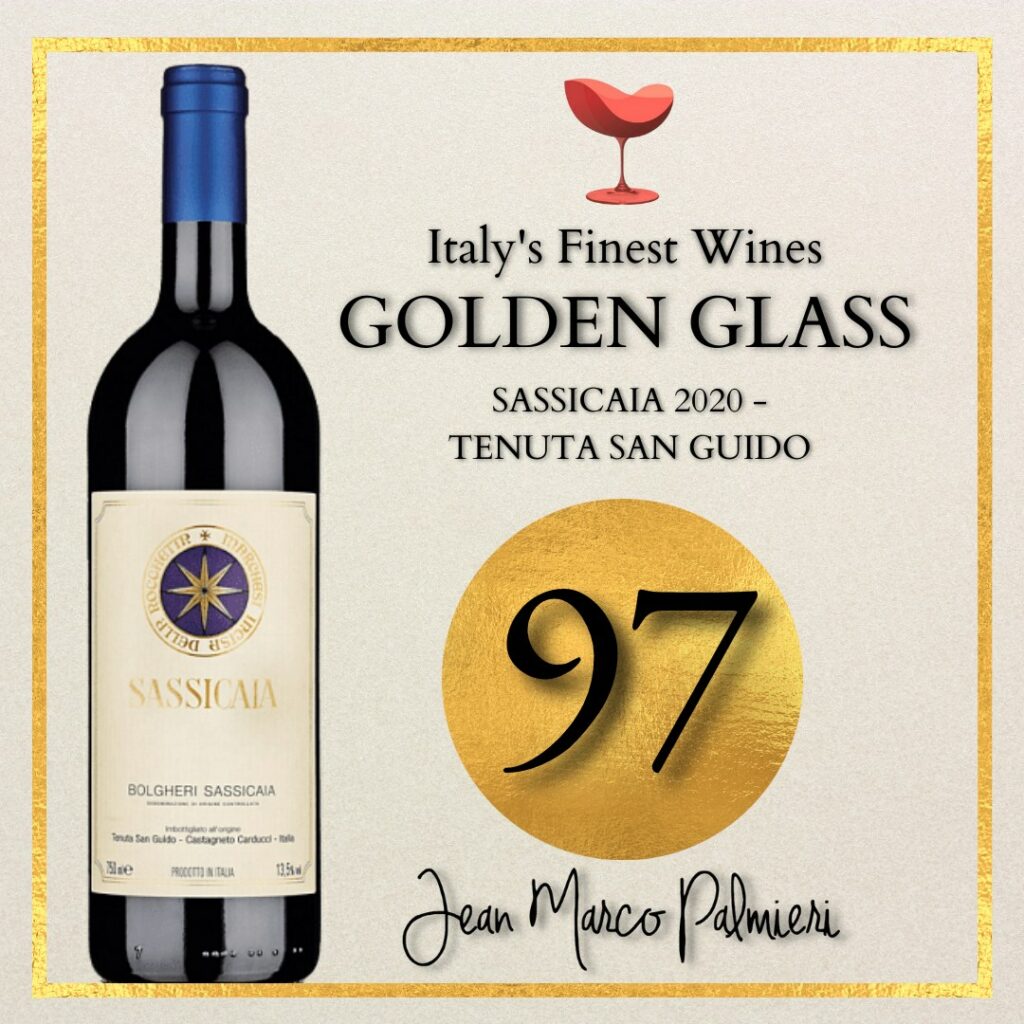
Description: Tickles the nose with intense varietal aromas of cherry, myrtle, garrigue, eucalyptus, and hints of green bell pepper. The sip is material and harmonious with powerful and velvety tannins well-balanced by a pressing acidity that creates a sensational palate balance.
Alcoholic fermentation by indigenous yeasts in temperature-controlled steel, maceration for 9-12 days in steel. Aging for 24 months in French oak barriques.
Grapes: 85% Cabernet Sauvignon, 15% Cabernet Franc
Region: Tuscany
A wine that has made history for Cabernet in Italy and paved the way for Bolgheri wines: rightfully one of the best red wines for indisputable finesse. A wine of great elegance, refined but imaginative, narrating the eloquence of the Bolgheri terroir.
Riserva Diecianni 2013 – Le Chiuse
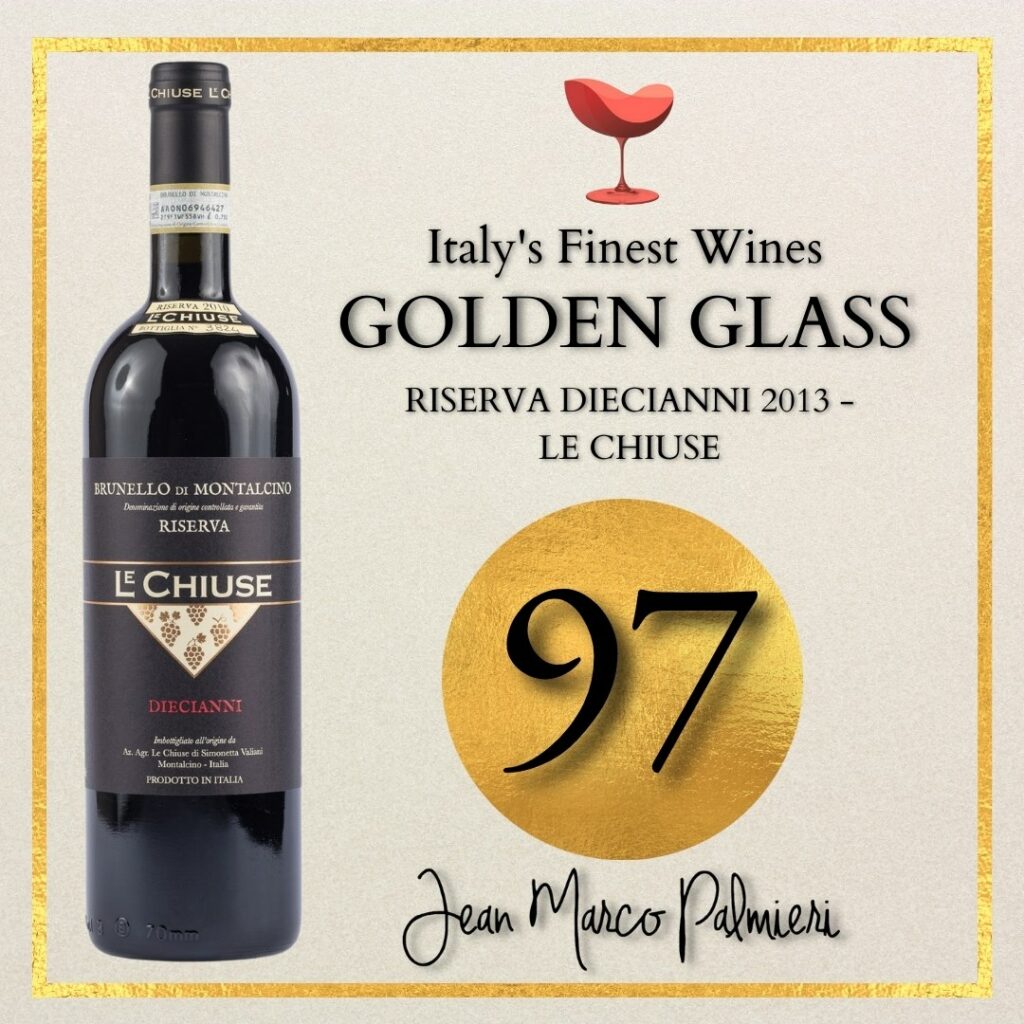
Description: A polyhedral and passionate bouquet: it outlines raspberry and cherry under spirits, joined by sensations of roasting, tar, and tobacco.
On the palate, it is material with dense and thick tannins. A long, clean, and enveloping finish. The grapes used for the production of this wine come from different vineyards, with some cultivated on the north and northeast slope of the Montalcino hill.
For the creation of the Riserva, only the best clusters are carefully selected during harvest. Diecianni undergoes a prolonged aging period that extends up to 10 years.
An expansive yet vertical wine, fully among the best Italian wines for extraordinary aging potential, length, and complexity.
Montosoli – Brunello di Montalcino 2019 – Altesino
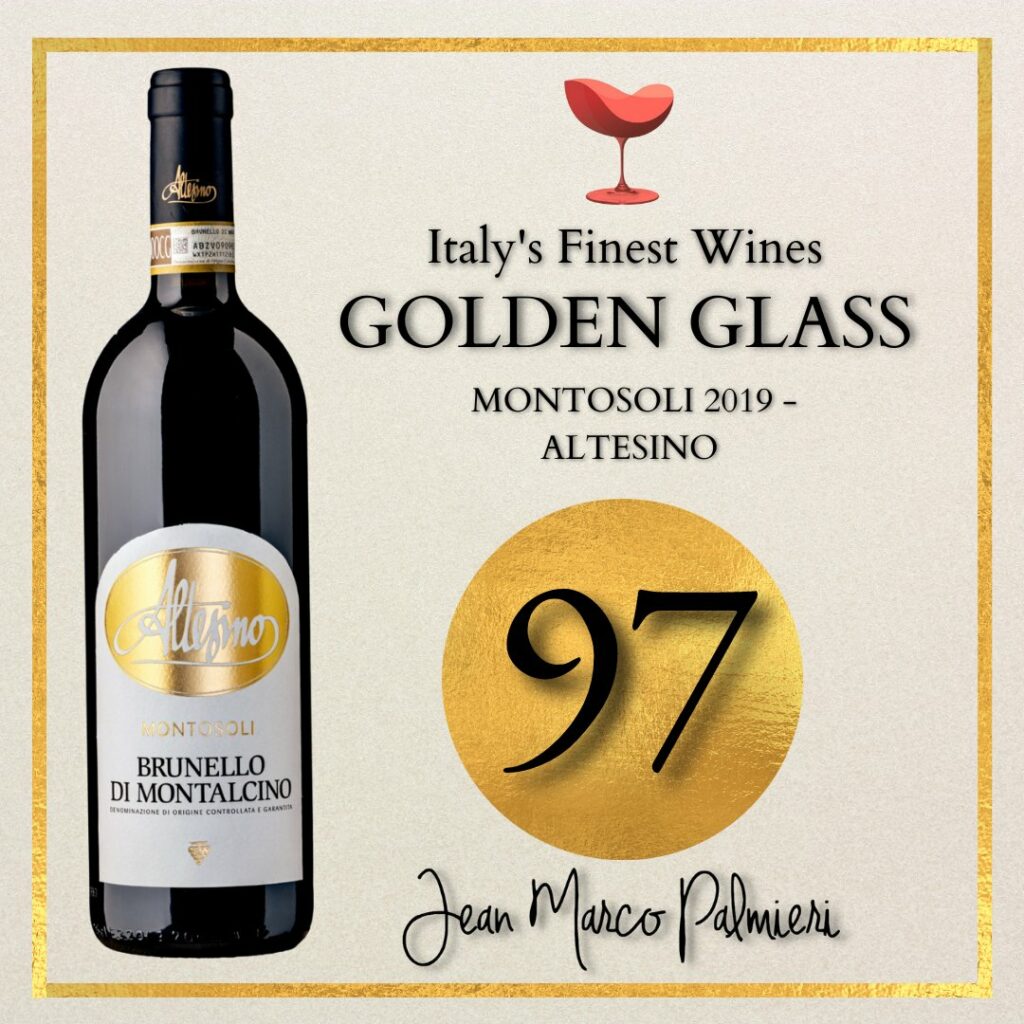
Description: The scents are fresh and distinguished by exceptional varietal clarity, ranging from violet and blood orange to medicinal herbs and patchouli.
In the mouth, it presents great freshness and balance, with silky tannins of excellent concentration that support the palate and extend towards a savory and persistent finish.
Traditional vinification and long aging in oak barrels. The historic first cru of Montalcino, born in 1972 and facing north, is known for producing wines with lower alcohol content, highlighting a more delicate and elegance-oriented character.
Led by Elisabetta Gnudi and her daughter Vittoria, Altesino is a winery with about 50 hectares of vines, mainly located on the north side. The company has always been committed to meticulous sustainable practices and has solar panels that cover a good part of its energy needs. Altesino’s wines are known worldwide for skillfully combining tradition and modernity, complexity, and immediacy.
One of the best Italian wines for those who want to unequivocally understand the refined character of Montosoli.
Region: Tuscany (Montosoli)
Vino Nobile di Montepulciano ‘Le Caggiole’ 2019 – Poliziano
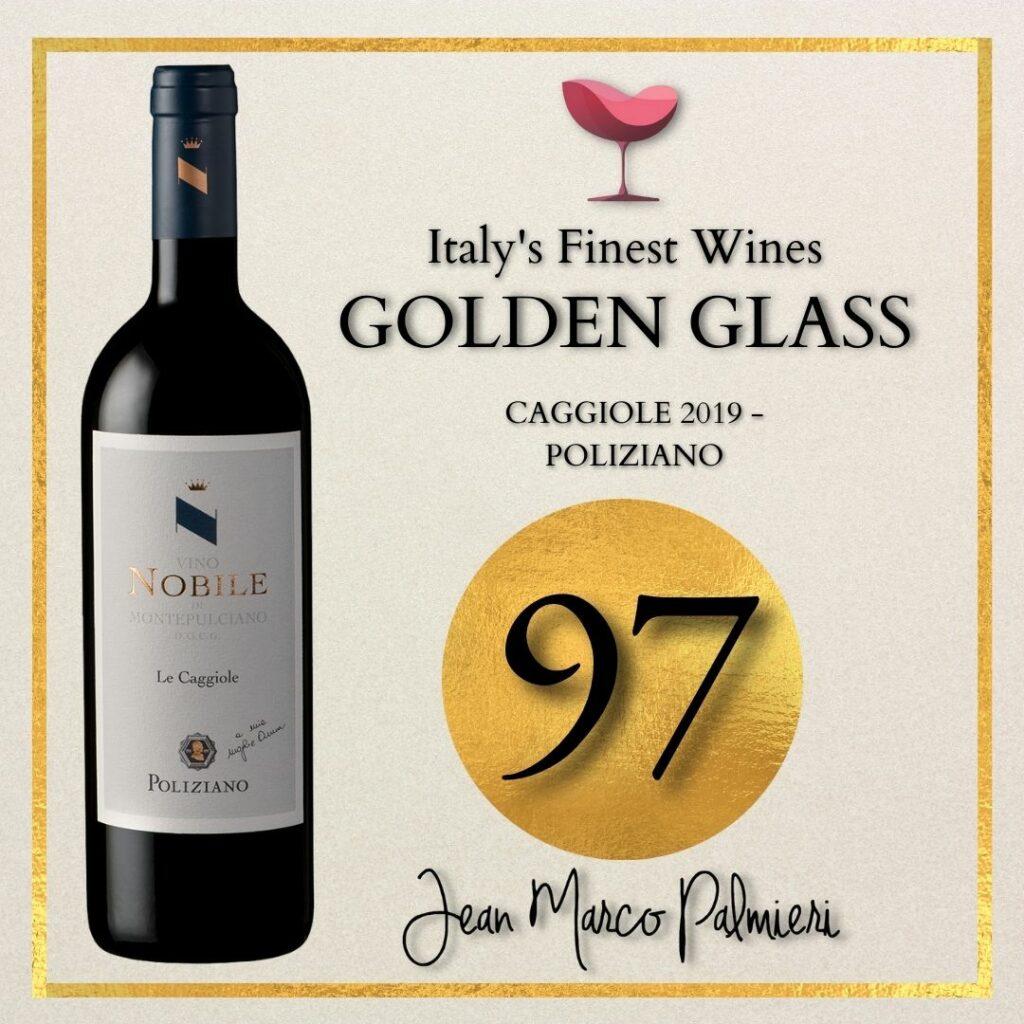
Description: Opens in a kaleidoscope of clear notes of wild strawberry and raspberry, enriched by nuances of blood, leather, spicy echoes, tar, and humus. The sip is dense and vibrant, with a sensational nerve-like acidity well-balanced between ripe and silky tannins and mineral sapidity that amplifies the course.
An opulent wine with a classic character, a sincere nose, and great expressiveness that maximizes the varietal and vertical character of Sangiovese. Excellent aging potential.
The iconic Montepulciano winery Federico Carletti gives us another wine of great character. Fully among the best Italian wines.
Region: Tuscany (Montepulciano)
Civettaja Pinot Nero 2020 – Podere della Civettaja
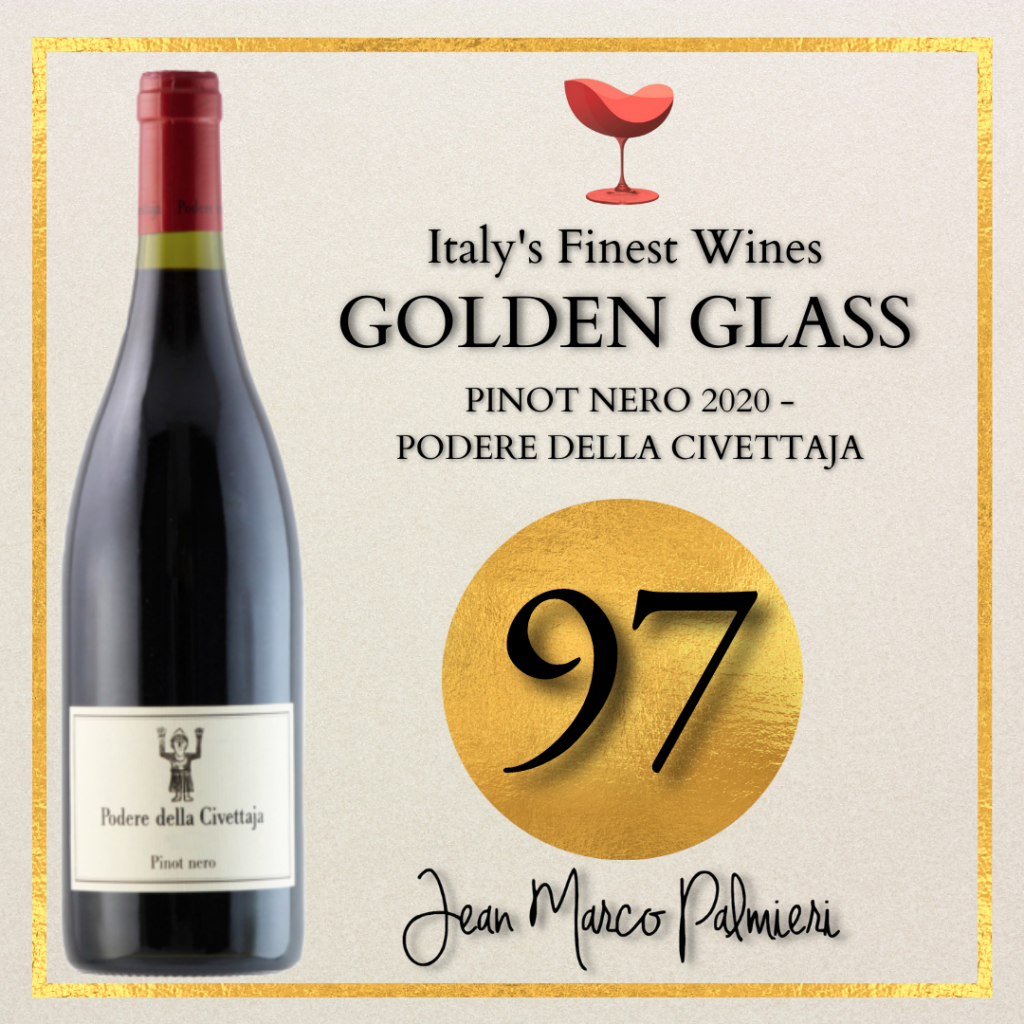
Description: At the nose, it suggests fragrant red fruits, medicinal herbs, bloody notes, and orange peel. On the palate, it is voluminous with smooth tannins, captivating iodine-mineral suggestions, and a finish of great persistence echoing the varietal character clearly.
Ferments with indigenous yeasts and ages for 12 months in old barriques, 10 in cement tanks, and at least 9 months in the bottle.
An intriguing, complex, and unpredictably expressive Pinot Nero. A fanciful and artisanal interpretation of Pinot Nero in Tuscany.
Region: Casentino (Tuscany)
Brunello di Montalcino Tenuta Nuova 2019 – Casanova di Neri

Description: Frontal and ripe fruit ranging from blackberries and cherries, followed by sweet spice suggestions, dark chocolate, and pine resin. On the palate, it is dense, velvety, and enveloping, with compact tannins evolving into an excellent persistence finish dominated by fruit and balsamic nuances.
Derived from the Le Cetine vineyard, located southeast of Sant’Angelo in Colle. Grapes are meticulously selected manually and with an optical sorter to extract only the best tannins. Fermentations occur without the addition of yeasts, and slow aging in wood (30 months) in barrels characterizes the aromatic profile and enhances the typicality of the grape.
Guided by Giacomo Neri, assisted by his sons Gianlorenzo and Giovanni, Casanova di Neri is a company with 63 hectares of vineyards and represents one of the most important international references among Montalcino’s excellences.
Among the best Italian wines for intensity and enological style of great precision.
Region: Southeast (Sant’Angelo in Colle)
Colore 2018 – Bibi Graetz
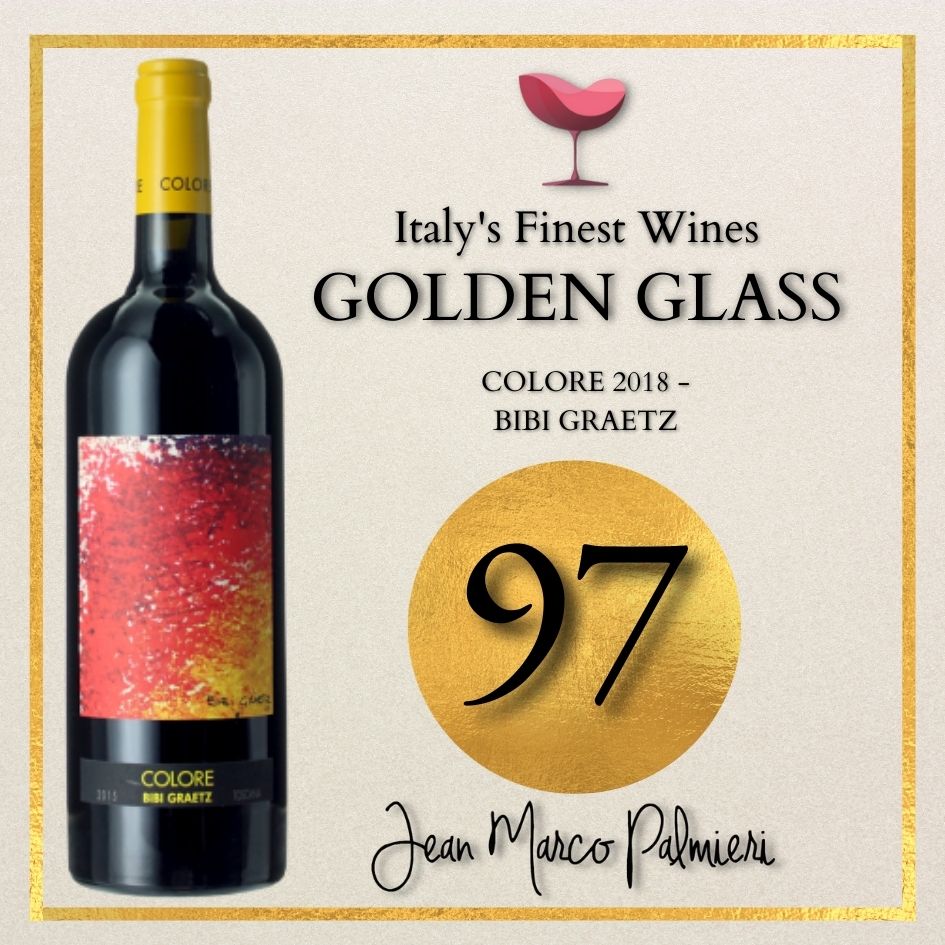
Description: Incisive scents of ripe cherry and blackberries expanded by nuances of leather, cloves, and medicinal herbs. On the palate, it presses with a thick, penetrating, and silky tannic texture, mitigated by a nerve-like acidity. Unfolds to a balsamic, very persistent finish.
Grapes: Sangiovese 100%
Region: Tuscany
A sui generis and original wine, among the best Italian wines for expressiveness and enhancement of Sangiovese character in the hills of Fiesole. Extends towards a balsamic and persistent finish, transporting the mind to a madeleine of bucolic sensations.
Panizzi – Vernaccia di San Gimignano Riserva 2018

Characteristics:
Nose rich in facets, between citrusy notes of orange blossoms, salty nuances, and old-style mustard. In the mouth, it creates a sensational dialogue between nerve acidity and salinity.
Among the best Vernaccia di San Gimignano for evolutionary potential: the varietal character of Vernaccia stands out, embellished by a wooded side and masterfully integrated tertiary nuances. Organic label.
Not just wine, but an irreducible advocate of the eloquent and elegant character of Vernaccia di San Gimignano.
Region: Tuscany
Brunello di Montalcino 2019 – Giodo
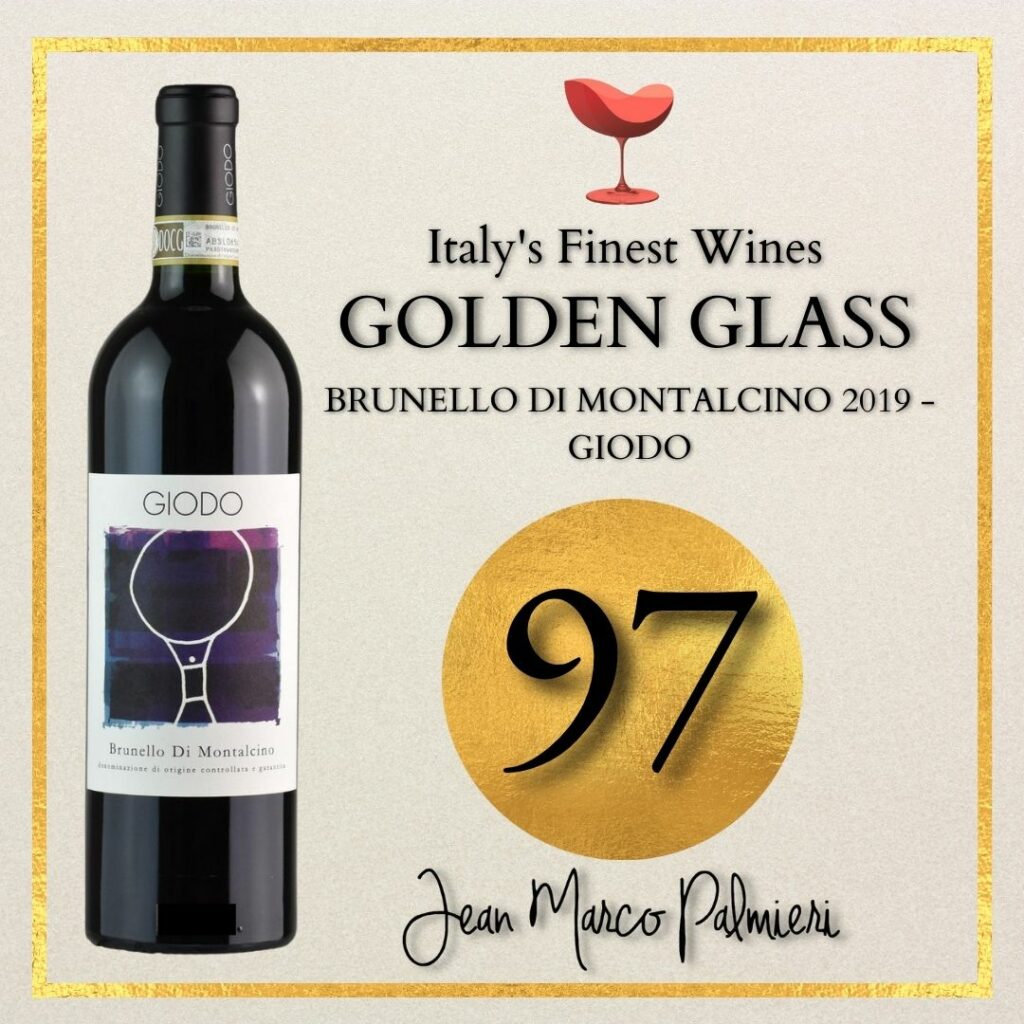
Description: Cherry, sour cherries, and blackberries on a background of white chocolate and tobacco. In the mouth, it is enveloping and savory with a tannin of great presence well outlined and silky, and an incisive nerve-like acidity that creates harmony and cleanliness to the sip. Excellent persistence.
Alcoholic fermentation in steel and cement vats and 20 days of skin contact, followed by aging for about 30 months in 500, 700, and 2,500-liter wooden barrels. Followed by about 6 months in cement and 18 months in the bottle.
Giodo’s care, led by Carlo and Bianca Ferrini, for the winemaking process stems from the desire to maximize the potential of Sangiovese in an elegant and territorial key.
An interpretation with a rich and enveloping character. Among the best Brunello di Montalcino for the ability to combine power and elegance.
Region: Southeast (Sesta)
Brunello di Montalcino Vigna Loreto 2019 – Mastrojanni
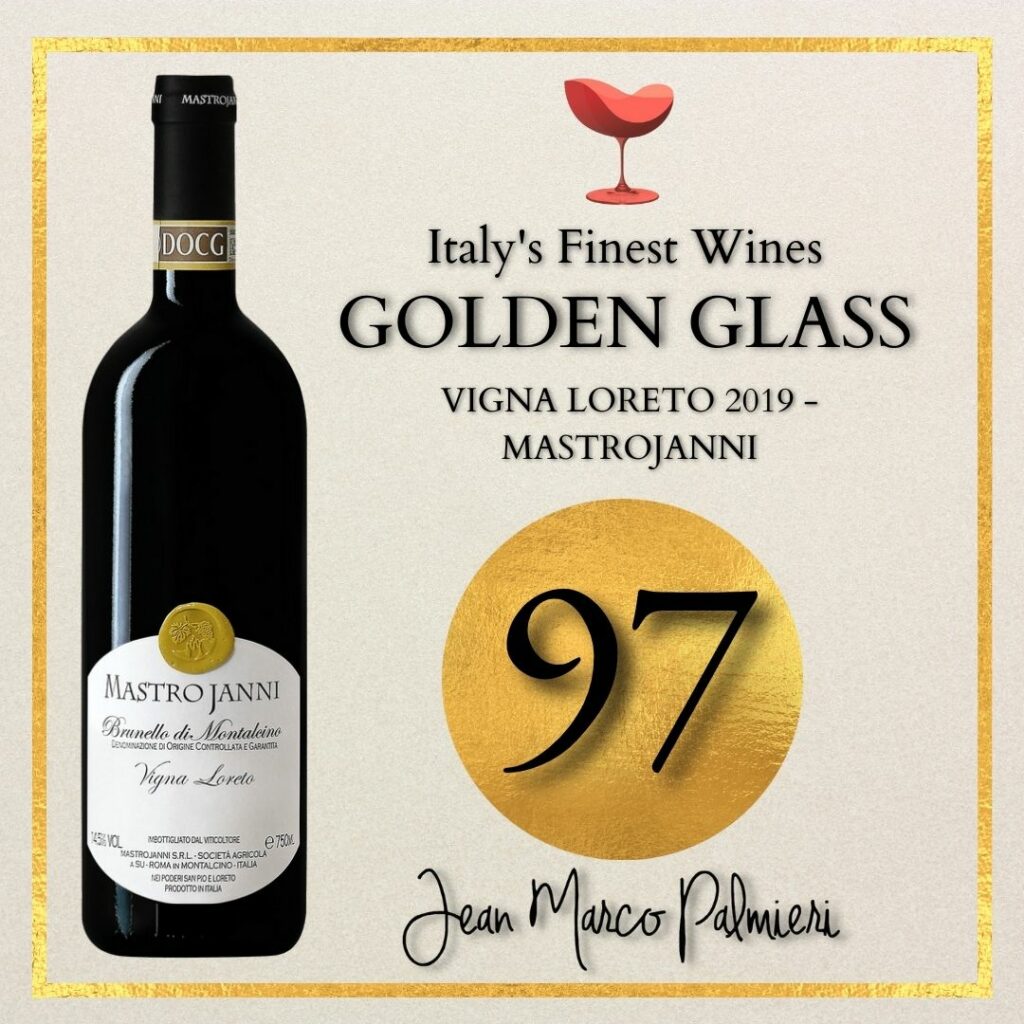
Characteristics: Jammy blackberry followed by pine resin and peaty notes. On the palate, it is characterized by a pronounced concentration and glyceric component. A finish of great length, dry on fruit and spices.
Grapes were selected on the sorting table based on quality, destemmed, crushed, and, by gravitational fall, collected in resin-coated cement tanks. Here, the alcoholic fermentation began, and based on its progress, daily pumping over or delestage was carried out. The skin contact lasted about 20 days. The wine matures for 36 months in 25 hl barrels (Pauscha 2020), 29 hl (Pauscha 2020), and 16 hl (Stockinger 2000).
From the historic Mastrojanni cellar, an interpretation of Brunello di Montalcino in a classic key with great aging potential and complexity.
Region: Southeast (Castelnuovo dell’Abate)
Syrah 2020 – Stefano Amerighi
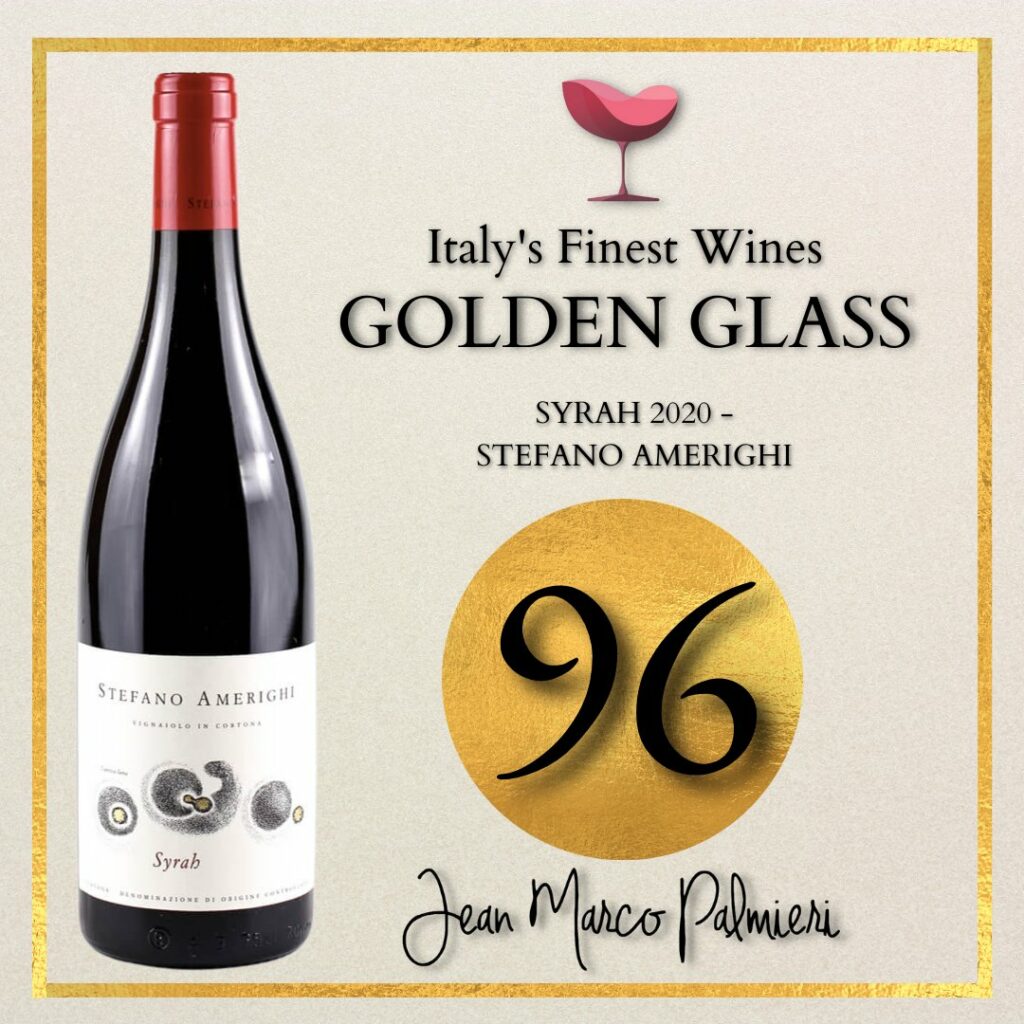
Description: Opens with a frontal fruit of mulberry and blueberry, followed by a potpourri of dried flowers, black olive, sandalwood, patchouli, and bloody notes. On the palate, the phenolic component is substantial, with calibrated tactile roughness that gives rhythm to the sip, linked to an acidic nerve that provides dynamic and compelling progression.
Biodynamic wine, fermented with indigenous yeasts, and aged in exclusively inert materials.
A Syrah with a unique character: Unusual olfactory eloquence that unfolds into a palate of great presence and complexity. Fully among the best Syrahs of Cortona.
Region: Tuscany (Cortona)
Il Carbonaione 2019 – Podere Poggio Scalette

Characteristics: The aromatic spectrum is seductive, outlining nuances of ripe cherry, wild raspberry making way for boisé tones, tar, and tobacco.
On the palate, it is voluminous, with a tannic structure of significant thickness well outlined and synergistically linked to an acidity that creates dialectic and rhythm. Excellent persistence with echoes in retro-olfaction of fruit and spices.
An unmissable wine: a triumph of scents and tertiary notes expertly integrated. Deservedly listed among the best Italian wines for the ability to masterfully renew the character of Sangiovese.
Region: Tuscany
Chianti Classico 2019 – Castel in Villa
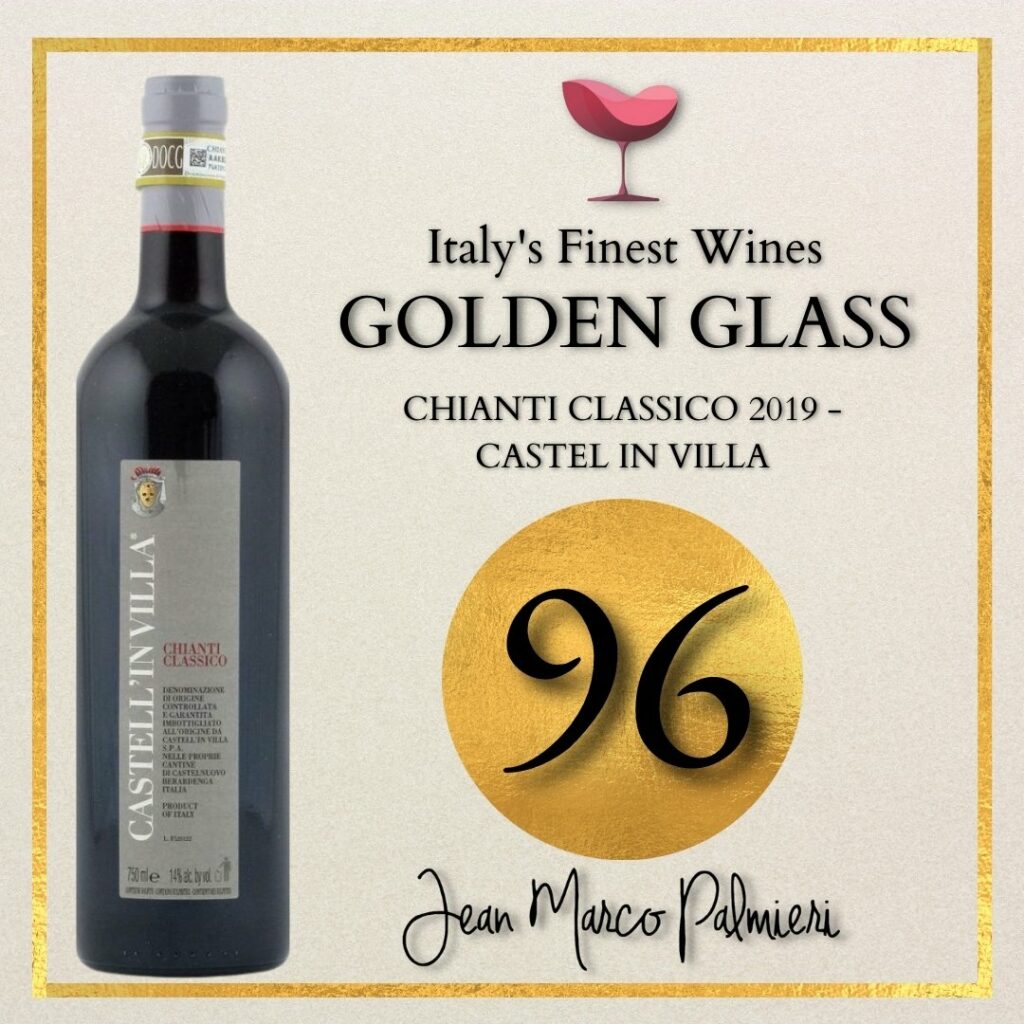
The nose is captivated by fragrant notes of black cherry and citrus nuances, accompanied by hints of tobacco, wild mint, and sweet spices.
On the palate, the sip is decisive, with a substantial and enveloping phenolic component that synergizes with the alcoholic and acidic ones, giving life to a complex and balanced wine of great presence. A perpetually persistent finish with clear varietal and herbal notes.
Fermentation takes place in steel with indigenous yeasts, and the wine matures for 36 months in large oak barrels, followed by at least 12 months in the bottle.
Grapes: 100% Sangiovese
Winery Location: Castelnuovo Berardenga
La Badiola 2019 – Castello di Fonterutoli

Opens in a jubilation of cranberries, blood orange followed by leather, and well-integrated delicate boisé nuances.
The sip unfolds broadly, with a phenolic component of good concentration and maturity but also vibrant due to an incisive acidity that provides freshness and pleasantness to the sip.
Aging for 16 months in 500-liter French oak tonneaux (30% new).
The Gran Selezione La Badiola from Castello di Fonterutoli, obtained from vines at 575 meters above sea level on sandstone and galestro soils in Radda, is undoubtedly among the best Chianti Classico for its ability to interpret Sangiovese in a refined and slender key.
Grapes: 100% Sangiovese: 3 clones + 3 Massal selections
Commune: Radda in Chianti (Vigna la Badiola) – Winery: Castellina in Chianti
UNO 2020 – Tenuta Carleone
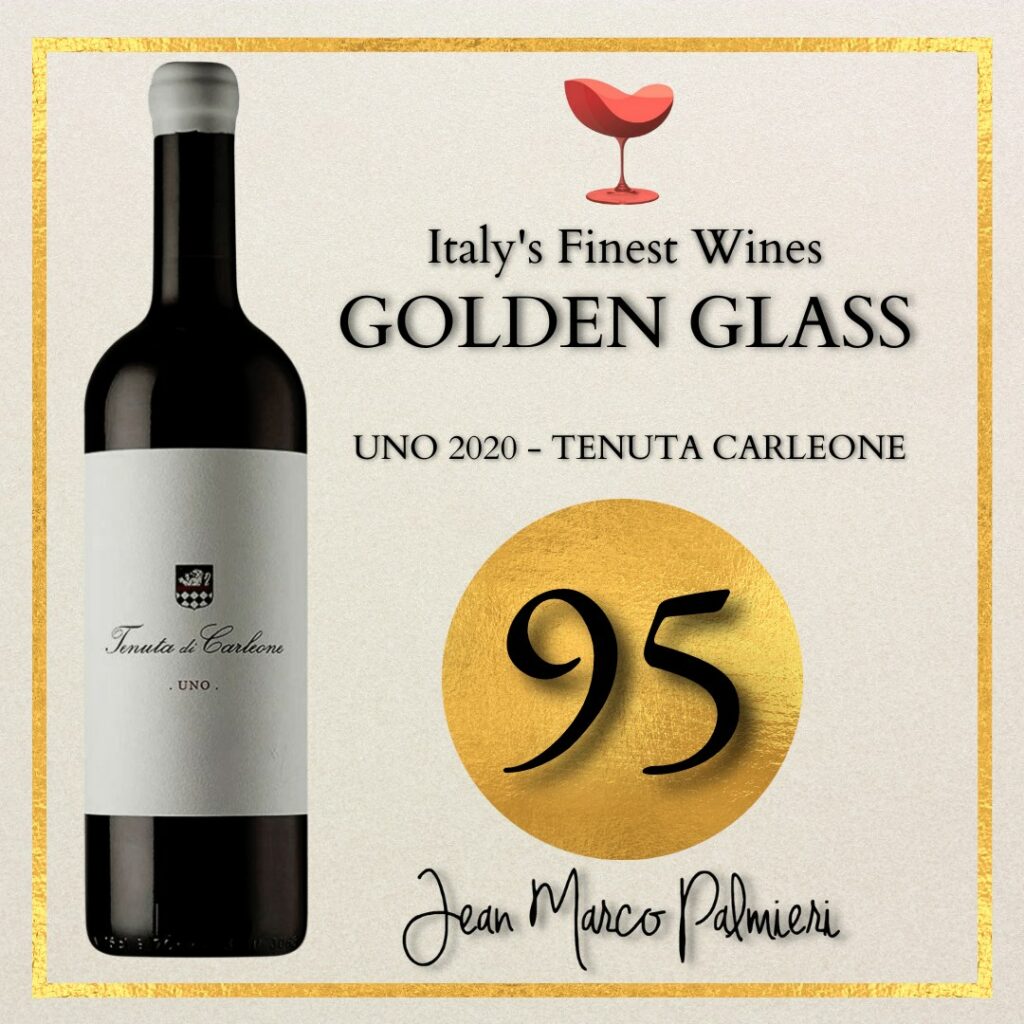
The nose opens in a kaleidoscope of fresh red fruits, wild raspberry, and cranberries with hints of cinnamon powder, leather, and medicinal herbs.
In the mouth, it has a developing phenolic extract, supported by a fresh component that provides freshness and extends towards a persistent and spicy finish.
A vertical wine with extraordinary acidity, embellished with captivating savory suggestions and great fruit intelligibility. Deservedly among the best Italian wines for its unique character.
Region: Tuscany
TERROIR AND PRODUCTION AREAS OF WINES OF TUSCANY
What are the typical terroirs of Tuscany and the production areas of Tuscan wines? Let’s discover the main wine-growing areas of Tuscany, from the wines of Central Tuscany to the Tuscan wines of the Tyrrhenian Coast.
Wines of Central Tuscany
The central part of the region is mainly hilly and has a Mediterranean-type climate, with hot summers and mild winters. The climate gradually becomes more continental and with greater temperature variations approaching the Apennines.
Summers are not very rainy, creating many water problems for the vineyards. The soils are very heterogeneous; however, among these, we can identify the alberese, of calcareous origin, and the marl, of a clayey nature, particularly typical and widespread in the Chianti Classico area. The sensational combination of this climate and soils gives longevity and elegance to Tuscan wines.
In this area, famous Tuscan Sangiovese-based red wines are produced, such as Chianti Classico, Brunello di Montalcino, Nobile di Montepulciano, Carmignano, and the historic Tuscan white wine par excellence: Vernaccia di San Gimignano.
Central Tuscany has also given birth to countless prestigious international vines such as Cabernet Sauvignon and Cabernet Franc, Merlot, but also Syrah, especially in Cortona and Montecarlo, and Pinot Nero in Mugello and Casentino.
Wines of the Tyrrhenian Coast
The climate of the Tyrrhenian coast is Mediterranean, characterized by moderate temperature variations and by the presence of sea winds that mitigate the hot and dry summers. The soils of the Livorno coast and northern Tuscany are rich in sand and clay, definitely rich in micronutrients, which favor the structure and flavor of the Tuscan wines of these areas. The Maremma is instead characterized by the presence of calcareous-clayey soils, while in the Grosseto hinterland, the soils of volcanic origin prevail.
The most famous Tuscan wines of the Tyrrhenian coast are produced in Bolgheri, starting from international varieties such as Cabernet Sauvignon, Cabernet Franc, and Merlot, Syrah. Maremma, on the other hand, is the homeland of Morellino di Scansano, a famous Tuscan red wine made from Sangiovese grapes, locally called Morellino.
Among the white grape varieties that make up the Tuscan wines of the Tyrrhenian Coast, the Vermentino stands out, in particular in Bolgheri and in the territory of Candia dei Colli Apuani, and the Ansonica (or Inzolia) widespread mainly in the Maremma, but also in insular Tuscany on the Island of Elba and on the island of Giglio.
GRAPE VARIETIES OF TUSCANY
What are the most common grape varieties from which wines of Tuscany are produced? Tuscan wines are produced both indigenous and international varieties, with a predominance of black grape varieties (85%).
Native vines – Sangiovese is the most widespread variety in the region and is the main base of many of the best Tuscan red wines, such as Chianti Classico, Vino Nobile di Montepulciano, Brunello di Montalcino, Morellino di Scansano, and Carmignano.
Other indigenous varieties widely spread among Tuscan wines are Canaiolo Nero, Colorino, Ciliegiolo, and Aleatico for red wines, Vernaccia di San Gimignano, Vermentino, Malvasia del Chianti, and Trebbiano Toscano for white wines. In addition, on the Tyrrhenian coast, and in particular in the Maremma and on the island of Elba, Ansonica (or Inzolia) is widespread, from which white Tuscan wines of great interest are produced.
Allochthonous vines – The most widespread international varieties among Tuscan wines are Cabernet Sauvignon, Cabernet Franc, and Merlot, particularly widespread in the Bolgheri area and are also often used as complementary vines of Sangiovese, as in the example of Chianti Classico and Carmignano.
Other international grape varieties from which Tuscan wines are produced are Syrah, in particular in Cortona and Lucchese, and Pinot Nero, in Casentino and Mugello. As for Tuscan white wines, the most widely used international white grape varieties are Chardonnay, as happens for the Pomino Bianco on the Florentine hills or in the Maremma, and Sauvignon Blanc, which is widespread on the Tyrrhenian coast.
DOCG, DOC, IGT OF THE BEST WINES OF TUSCANY
What are the DOCG and DOC of Tuscan wines? Tuscany is one of the regions with the most designations of origin in Italy, with 11 DOCGs, 41 DOCs, and 6 IGTs. It is impossible not to mention Chianti DOCG and Chianti Classico DOCG, Brunello di Montalcino DOCG among the most important DOCGs, Vino nobile di Montepulciano DOCG, Morellino di Scansano DOCG, Montecucco Sangiovese DOCG, and Vernaccia di San Gimignano DOCG.
Among the best DOC of Tuscany stand out Bolgheri DOC, the Syrah DOC of Cortona, but also the Rosso di Montalcino DOC, the Rosso di Montepulciano DOC, the wines of Orcia DOC, DOC Maremma Toscana, and many others.
Let’s discover the appellations of origin of Tuscany with greater resonance:
FOOD AND TUSCAN WINE PAIRING

What to Combine with the Best Wines of Tuscany?
Tuscany is rich in culinary history, anecdotes, and traditions that make this region an Italian gastronomic scenario of great interest. Land of gastronomic excellences such as Chianina and Maremmana beef, Cinta Senese pig but also game such as duck, hare, and wild boar.
Tuscan bread is a symbol of Tuscan gastronomy and is distinguished by the lack of salt, so much so that it is called silly or unsalted bread. It is precisely from the reuse of stale bread that many iconic dishes of Tuscan poor cuisine are born: pappa al pomodoro and ribollita, but also panzanella and Maremma aquacotta.
Among the starters, pork-based dishes are popular. Typical Tuscan appetizer with cold cuts, such as Tuscan ham, finocchiona, and soprassata, rigatino, and buristo, strictly accompanied by Tuscan livers toast.
The first courses are generally based on complex sauces often based on game and white meats such as the famous pappardelle with wild boar or hare sauce. Other very characteristic Tuscan first courses are Mugello potato tortelli, Maremma tortelli, pici all’aglione, and gnudi.
Wild boar scald Among the second courses to try in Tuscany, we find the famous Florentine steak, a very tall and tasty cut of Chianina or Maremmana meat to be cooked on the grill or on the grill and served very rare. Among the main courses based on meat, there are countless stews and braised meats such as Peposo dell’Impruneta, the Sangiovannese-style Stracotto, the Wild Boar Scottiglia.
Also from the beef are born iconic dishes of Tuscan cuisine such as the Florentine tripe and the Lampredotto, but also the tongue, the cheek, and the livers, all dishes that can be enjoyed in the classic Tuscan street-food.
Not least the Tuscan soups and minestrone, generally made of black cabbage, but also the beans all’uccelletto, a must in typical Tuscan taverns.
On the Tyrrhenian coast, we find fish-based specialties, such as Cacciucco alla livornese or cod alla maremma, as well as a passion for fried rock fish and shellfish.
Finally, there are many traditional Tuscan desserts. Among these are the cantucci di Prato which go perfectly with Tuscan vin santo, or other typical sweets such as the Florentine schiacciata, the grape schiacciata, the brigidini, the Sienese panforte, and many others.
What are the best wines of Tuscany?
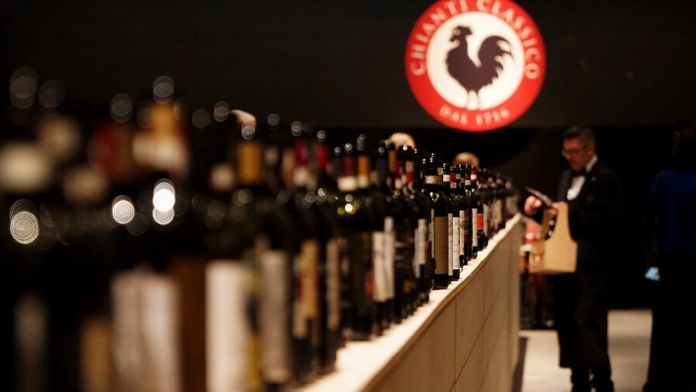
What are the Best Wines from Tuscany? Choosing is a difficult undertaking, which, in any case, inevitably lies within the limits of a subjective opinion, which, by definition, is deficient and arbitrary. We have compiled our list of virtuous quality interpretations of wines from Tuscany from the best wineries according to our evaluations.
However, it remains essential to underline that the best wines from Tuscany are those that are able to excite us, also by binding themselves to contingent situations and unrepeatable and intimate moments of our life.
Therefore, we invite you to discover all the wineries that produce wines from Tuscany in their uniqueness so that you can independently find and choose the wine that can be counted for you among your best wine from Tuscany.





